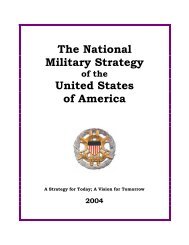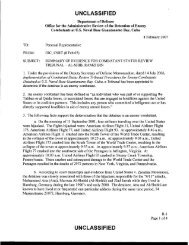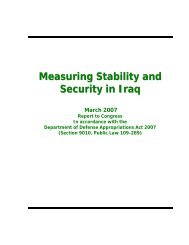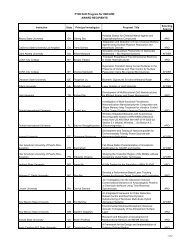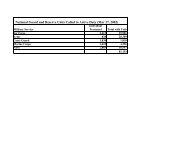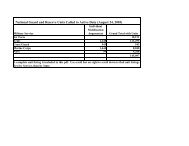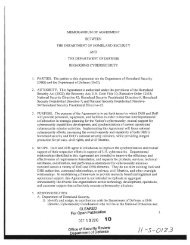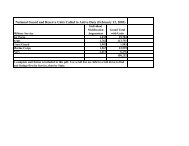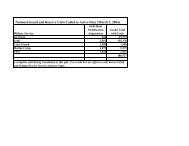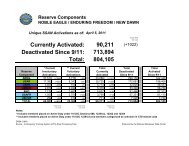Report - United States Department of Defense
Report - United States Department of Defense
Report - United States Department of Defense
You also want an ePaper? Increase the reach of your titles
YUMPU automatically turns print PDFs into web optimized ePapers that Google loves.
UNCLASSIFIED<br />
1.11: LOOKING AHEAD: THE NEXT 6 MONTHS<br />
Over the next six months, the ANSF will continue to be the backbone <strong>of</strong> long-term security and<br />
stability for Afghanistan. The ANSF will take the lead for security nationwide, confronting the<br />
insurgency while setting conditions for completion <strong>of</strong> transition through continued coordination<br />
with coalition forces and the international community.<br />
The nature and focus <strong>of</strong> the ISAF campaign will steadily evolve. ISAF will maintain campaign<br />
momentum as it shifts to a role in support <strong>of</strong> the ANSF, all the while transferring non-security<br />
functions, redeploying forces, closing and aligning bases, and evolving the command and control<br />
structure for the NATO-led, post-2014 mission. ISAF will continue to support the ANSF<br />
through seasonal shaping operations, employing all available military and interagency resources<br />
to maintain pressure on the insurgency.<br />
The ANSF will be tested this fighting season. While insurgent capability and territory have been<br />
significantly degraded during the past two years, the insurgency remains a potent force. The<br />
insurgency’s sanctuaries in Pakistan, corruption, and the limited capacity <strong>of</strong> the Afghan<br />
government at the local level will remain the biggest risks to turning security gains into a durable<br />
and sustainable Afghanistan. Despite ISAF’s shift to a TAA mission, it retains significant<br />
combat power and will assist the ANSF as needed.<br />
Milestone 2013 marked the shift <strong>of</strong> the ISAF mission from a leading combat role to a supporting<br />
role in Afghan-led operations, with the ANSF in the lead for security at the operational level.<br />
ISAF will, however, retain operational and tactical command <strong>of</strong> all ISAF forces in Afghanistan<br />
through the end <strong>of</strong> 2014. Milestone 2013 was announced on June 18, 2013, as was the<br />
announcement <strong>of</strong> tranche five <strong>of</strong> the transition process. Tranche five—the final group <strong>of</strong> Afghan<br />
districts to enter into the transition <strong>of</strong> lead security authority—will be implemented in late<br />
summer, subject to GIRoA and NATO approval. In the remaining months <strong>of</strong> the transition<br />
process following Milestone 2013, ISAF trainers and advisors will continue to work closely with<br />
their Afghan counterparts to close gaps in ANSF capability.<br />
This milestone also occured alongside ISAF’s focusing SFA at higher levels <strong>of</strong> command. By<br />
November 2013, most SFA will be focused at the Afghan brigade and provincial levels and<br />
above. This will enable the ANSF to exercise greater autonomy and leadership <strong>of</strong> security<br />
operations, while still having access to ISAF assistance when required. This concept is in line<br />
with the President Obama’s statement related to pulling patrols back from villages. SFABs will<br />
be focused on developing the capability to conduct higher-level planning and execution <strong>of</strong><br />
operations, as well as the capability <strong>of</strong> the Afghans to support and enable those operations.<br />
1.12: ELECTION PREPARATION<br />
The presidential election in 2014 promises to be the first constitutional transfer <strong>of</strong> power in<br />
Afghanistan’s history, and for the first time, Afghans will be solely responsible for administering<br />
the process and providing security. A credible process with the fullest possible voter<br />
participation is critical to future stability, as well as to sustaining international assistance. The<br />
46



